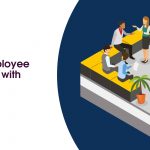Foot Traffic: How to Increase Customer Visits to Your Store
Foot traffic is a key factor for any successful retail store location and keeping it consistent and increasing (overtime) is a struggle and a challenge. More visits to your storefront from current and potential customers can boost sales and customer engagement, as well as give you the opportunity to connect in person with real shoppers.
How to Measure Foot Traffic
You don’t need to stand at the door and manually count everyone who enters to measure foot traffic. Thankfully, there is a way to help calculate foot traffic and collect information about the customers that visit your location(s).
This information can help you schedule the right number of sales associates for your busy and slow times, track conversion rates when used with sales data, and ensure that your store is designed in a way that facilitates customer engagement.
In-Store Analytics
Gathering in-store foot traffic intel can be a fairly manual process, or you can somewhat automate it — it just depends on your needs and budget.
If you’re looking for a fairly simple way to monitor the traffic in and out of your store, then you can always install a surveillance camera and comb through footage to identify the busy times of day, make a note of the common routes that customers take through the store, and estimate the demographic of your customers. And although this is a fairly cost effective method of loosely measuring foot traffic, it still requires manual counting on your end and isn’t 100% accurate.
You can also measure traffic through information obtained from your POS. POS systems in Pakistan and all over the world help gather how many customers have purchased products and that data can be collected to estimate the amount of traffic your store experiences in a day.
How to Increase Foot Traffic
Let’s take a look at five ways to increase your retail store’s foot traffic.
- Design is Key
The design of your retail store is an important factor in the volume of the foot traffic you see. The 7 secrets to retail design as:
- Open and social: Human beings are social creatures, therefore, our unconscious desire also influences how we act and how we take behavioural cues from others. When you put the behaviour you want to encourage on display, others will copy.
- Compelling: Good retail design demands attention and further interaction that triggers unconscious emotional responses.
- Engaging: Create an environment that encourages customers to engage with your brand. This elevates their sense of ownership and value, and they’re more likely to make a purchase.
- Focused: Rely on insights into your target audience and then build your store based around their unconscious needs.
- Easy: Stores that provide frictionless experiences earn recognition and success in the industry. Work to design a store that removes any barriers to ideal behaviour and fits seamlessly into the lives of your customers.
- Constantly evolving: Because humans are wired to love new experiences, store environments shouldn’t stagnate. Occasionally refresh the look and feel of your store to keep customers interested and engaged.
- Unique: This is sort of a no-brainer. Distinct spaces stay unique in the eyes of the customer and, therefore, gives you an upper hand over your competitors.
This seven-part formula for store design removes barriers so customers can move about easier. It also encourages and compels you to create a retail design that attracts the customers and triggers an unconscious emotional response from them.
- Lead by Example
As mentioned above, our desire to be social drives us to follow behavioral cues.
In other words,the more people are seen entering your store and interacting with your displays, the more people passing by will want to do the same. Invite passersby, put up interactive displays, and have open-space designs with a line of sight to encourage this behavior.
- Increase Engagement
An effective way to shore up foot traffic in the short term is through special events. Hold in-store events to introduce new products and demonstrations, as well as celebrate anniversaries, holidays etc to interact with your customers fully. This can also increase engagement with your customer base, as it gives you the chance to interact with them face-to-face in a social setting.
Special one-day promotions and flash sales are another way to increase foot traffic during slow periods, or when you need to liquidate inventory. Even if customers don’t make it out to your event, any marketing ventures for the event are also beneficial for brand awareness.
- Keep it Fresh
It’s important to keep things interesting and new at your retail location. Alternating window displays and updating product selection is important for your loyal customers who come back often. Also, seasonal displays are a great way to attract customers that might not be familiar with your brand but are looking to make a specific purchase for an upcoming holiday.
- Stand out from the Crowd
There is no denying that the world is a competitive place, especially if your retail location is in a busy city area. So bear in mind to keep it interesting and unique. You should have a clearly defined brand identity that is reflected in your retail location. Your brand should be evident in the design of the store, in-store signage and logos, the music you play, and the in-store graphics that mark displays and sections.








